Join us for an insightful conversation with Armando Cabba, a Paris-based artist whose painting revolves around intimacy and eroticism. From challenging censorship on mainstream platforms to pioneering erotic art education on Pornhub, Cabba fearlessly navigates the contemporary art world. Discover his unique approach to creation and his perspective on honesty in art.

Your body of work is rich in thought-provoking themes. Could you tell us about the core subjects you've explored in the past, the present, and the themes you anticipate diving into in the future?
I feel a lot of my work revolves around the theme of intimacy. If it’s a self-portrait, erotic, or portrait in general, it’s about closeness and the dialogue of connection. When it even comes to how I work, it’s just me alone with the canvas for extended periods at a time. Part of me finds it odd when people ask me when a piece is done because it’s like asking me when I’m going to conclude a relationship. On par with saying “When are you guys breaking up?” I’m still going to explore portraiture in a realist sense along with erotic art, but I do want to lean more into a form of abstraction seen in my piece called Civil. There feels to be more freedom and room to let emotions run wild while not being too anchored by technique. I don’t find technique to be an issue or some form of obstacle, but it feels like I can amplify other elements of the work. A new depth is there and I want to see what happens. Over the course of a few months, I’ve been having this idea to combine everything into some direction that has to do with Sainthood and Sex Work. An echo to one of my inspirations being Toulouse-Lautrec. Reminding myself of my time in Florence looking at these immense altars of idolized figures. I’m attracted to the framing and physical aspects of these pieces. My rough draft idea at the moment is to bring that element in regarding format and put my own spin on it. A lot of my work wouldn’t exist if it wasn’t for sex workers and I feel this is a way to explore that admiration I have by creating almost an homage series. We’ll see where things go in the near future.
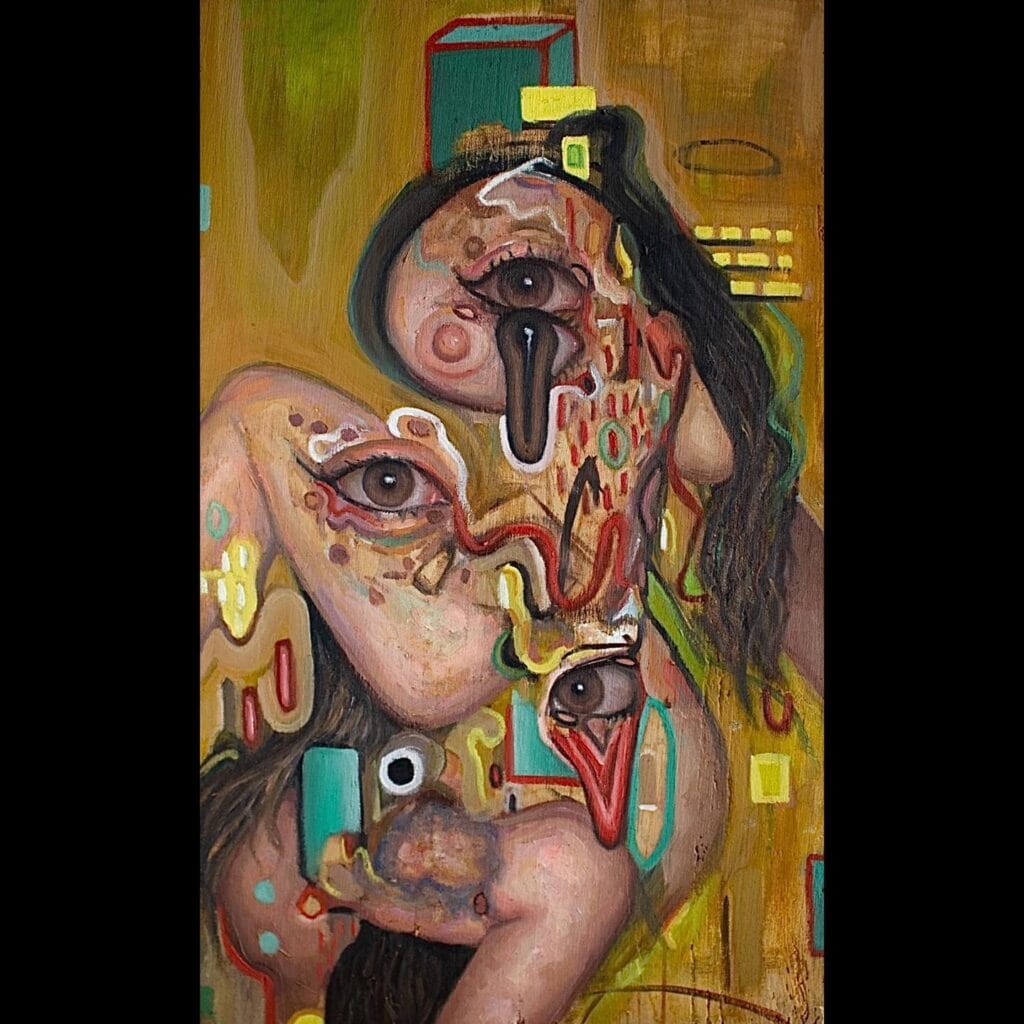
The JOI of Painting" is a vlog series you host on Pornhub. What is this series exactly?
The short answer is the JOI of Painting is an online painting series hosted on Pornhub where I get to teach people how to paint erotic art. It also doubles as a bit of a diary and a look into the process of this series as a whole. It feels a bit different when I paint when the camera is rolling, but it’s really something to be shared with the audience. I always found it to be a good test if you can explain what you’re doing to someone else in hopes of them learning. I don’t gate keep vulva painting. My art might be admirable, yet I’m excited to see other people create and want to tap into that artistic side of themselves. Especially with the increased censorship online, you can paint it yourself to keep it alive. If I can be a stepping stone in someone else’s story, that’s a huge compliment for me.
You've dealt with censorship previously. Do you consider a platform like Pornhub to be a space of unconditional freedom of expression? Furthermore, have you observed an increase in censorship or editorial restrictions on mainstream platforms, such as Instagram, over the last two to three years?
I find Pornhub to be a fun platform to create on considering it’s arguably one of the only ones that is concerned with the safety of its users as opposed to strictly punishing anyone who goes against the continuously evolving definition of “community guidelines” There’s a difference between making sure the videos are verified and consent forms are signed in comparison to Meta that removes fact checking safe guards and let’s abuse exist and be promoted on their platforms. In the age of digital discrimination and mass censorship, Pornhub stepped up. I can respect their screening process and rules since they give transparency into how things are being handled and why. The waves of deletions and flagged posts has only increased on major social media sites specifically Instagram. Sharing my art, regardless if I follow their rules, perpetually feels like a risk. It’s anxiety that comes from platform governance along with the rise of moral panic and strict laws. Creators are rolling dice with their own digital existence and don’t have a say in how things are measured and punished along with barely given any explanation. On an editorial note, even when it’s someone’s personal website and they want to feature my work, they don’t take the risk since they would promote the link through Instagram despite it not being on their platform directly. It still feels like it’s open season because god forbid we acknowledge nipples exist.
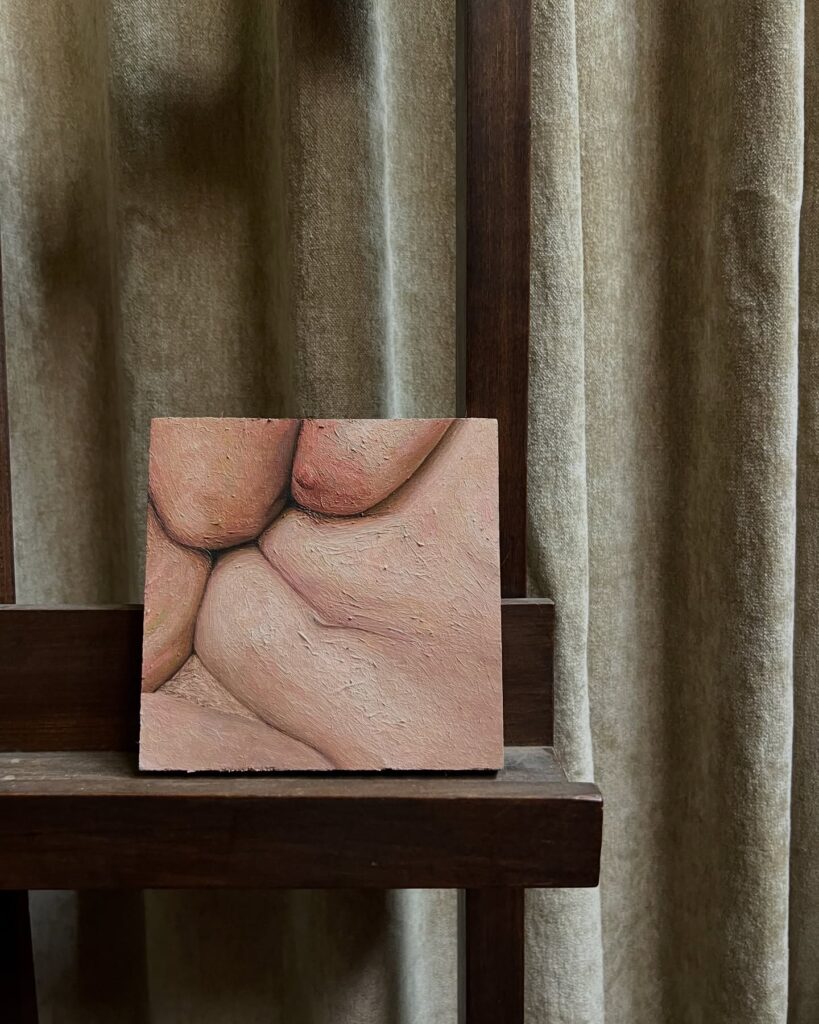
As a Montreal native who worked in Italy and is now based in Paris, what are the primary differences you've observed in the art market across these three locations, and how do they impact the reception of your work?
I felt a much refreshing change regarding mentality when I moved from Montreal to Europe in regards to the perception of being an artist. Despite the setting, I was always asked very intrusive questions on the subject of finances in Canada. “Where do you live and what’s your rent?” “Do you have a side job?” “Do your parents approve of this career and support it?” It’s not an exaggeration when I say these questions were asked within the first 5 minutes of speaking with someone even if it’s at a show opening. Since living here in Paris, I find the people have more of an understanding and respect of artists. I’ve been met with the same level of intrigue and acknowledgment in conversation when someone talks to someone who has a career in any other field. Kids are constantly on field trips to major museums and art history is history to them. I’m always excited to hear someone talk to me about the life of an artist they admire. They’re not shy to mention references they see in my work and take me down memory lane when they saw these shows in person for the first time. Montreal has talented artists who some of which I had the honour to work alongside. The market in Europe feels more open and you aren’t met with the same level of pushback when it comes to pricing your work. That’s not to say it doesn’t exist, but it’s more of a rarity I’ll have an individual argue with me or try to insult me to reduce my price by a couple hundred euros.
Please describe a typical day at your studio and outline your overall creative process.
My average day in the studio isn’t glamorous or romantic in my perspective, but maybe it’s because I do it every day. I’m not one to wait to have a project ready or to be hit with some lightning bolt of inspiration. When you come to my studio, there’s always some supports around that are primed and ready to go. The day usually starts for me around 8:30 where I get up and have my triple espresso before going to the gym. I’m in the camp of believing that it’s important to have a space outside of work and home to just do something physical beneficial for myself. I suffered a back-injury a while back, so in order for me to sit long periods of time and be functional, I need to do mobility training. The mornings are strictly for me where I get to be aware of myself on a physical level while also avoiding calls or emails until I get home. I have my first meal around noon and do all the office work I need to do before getting to the studio at 1:30 pm where I begin to work. Having my first cigarette of the day feels like the start of a ritual. I dress myself in my paint covered clothes, smelling the dried paint on me, and deciding what I want to accomplish for the day. I know I can procrastinate when my objectives are too clear, but I put myself in it right away by mixing paints and focusing on the feeling I’ll have at the end of the day when I complete it. Until 7-8 pm it feels very meditative in the studio. Despite having a challenge regarding the painting, I never feel scared. Anxiety has no place to stay in my mind when I’m thinking of my subject so much. I used to think you needed to be in “the zone” but you just need to be present. You got to show up. All these worries and little excuses don’t matter when I take my keys out to open the studio. They’re suddenly gone or so small I can’t even see them anymore.
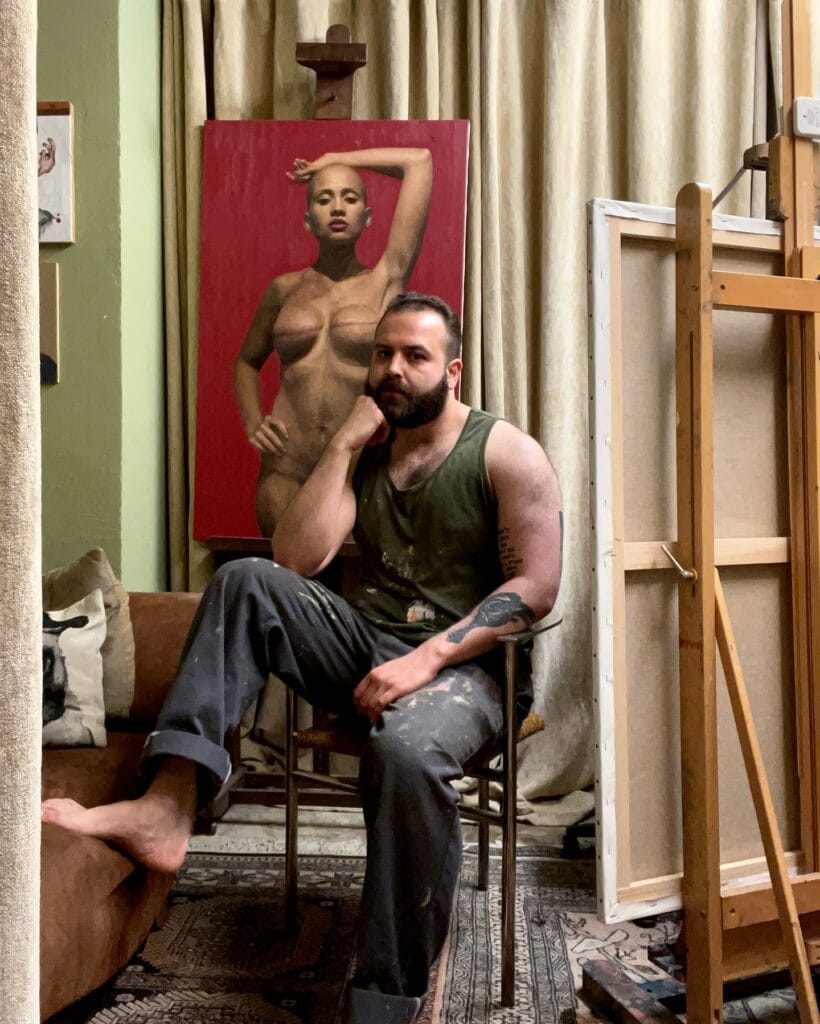
You define "good" art as that which is "honest." How do you define and realize this concept of honesty in art?
A lot of it has to do with social media and intent. Honest art is seeing something created by the artist for reasons far bigger than themselves. You can say it’s a calling or simply devoting themselves to answering a question through practice. Seeing artists who post pieces that look similar same thing over and over again with 0 variations or risk taking becomes boring. Sure, they have all the engagement, audience support, opportunities etc, but do you still create when no one is looking? Will you pick up that brush everyday knowing that no one will see what you do? Is there something deep inside of yourself that makes want to do what you do? That’s honest work to me. I admire the artists that create something that “flops” because it shows me there’s an evolution or at least the first step to something they want to do. We all plateau from time to time but if we stay there too long that plateau resembles your heart flat lining. My brain is satisfied watching these videos documenting creative processes and snippets of work, but I’m always left wanting to see the piece in full. I compare it to comedy where crowd work has overshadowed the entire set. Yes, you’re good at this one thing and it gives a dopamine rush, but what’s the set? There’s more to it than just that. I had growing pains to separate myself from the audience more and to not pay much mind to algorithms. I used to complete a painting and run to document it so I can share it. It’s part of my practice now to spend time with it on my own and take it in. I get a handful of likes, but that shouldn’t be a factor on deciding if I continue to create or not.
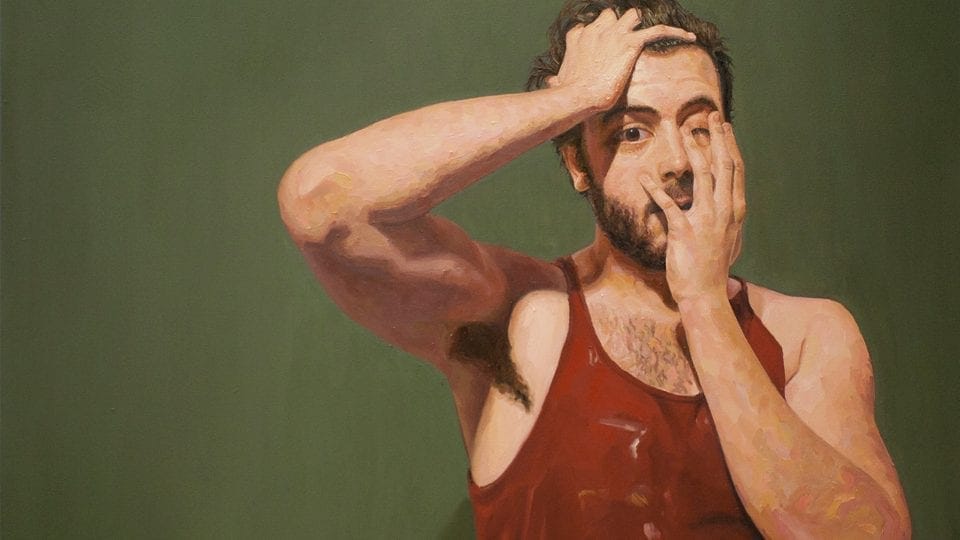
Which artists do you particularly admire for this quality of honesty in their work?
My first big admiration was Rembrandt. Seeing his portraits when I was in high school for the first time blew me away because of his use of light and shadow, but more importantly how human they were. It’s not just technical accomplishment, but seeing himself look at himself as a person as opposed to subject is crazy. You witness him age and go through life with each piece and brush stroke. Later on I was introduced to Lucian Freud and his approach and time spent with models. Almost sculpting time with paint. Showing these very real and raw moments you can’t fake or edit away. The big one after that was Francis Bacon. Hauntingly beautiful and devastatingly honest pieces that gripped me the moment I saw them. I progressed and overcame my fear of what it meant to “destroy” something by warping it. Destruction is a form of creation. They’ve been my big three for a long time. There’s a lot more on the list that you can clearly see I’m winking to in my own work, but it always comes back to them for me. I’m 35 and having been to so many exhibitions that clearly have influenced me, I always see parts of them in everything. I don’t mean that in a way that takes away from my contemporaries or reduces their own talent. It feels like we all have this very loose blueprint from these guys. The last one I’ll mention that is an obvious one is Bob Ross. Art is accessible outside of academia. To approach it for the sake of it and want to include others is so important. No art school vernacular or hierarchy. A man wanted the world to learn and to experience joy regardless of who you are. I truly mean it when I say he’s a master to me in that regard.
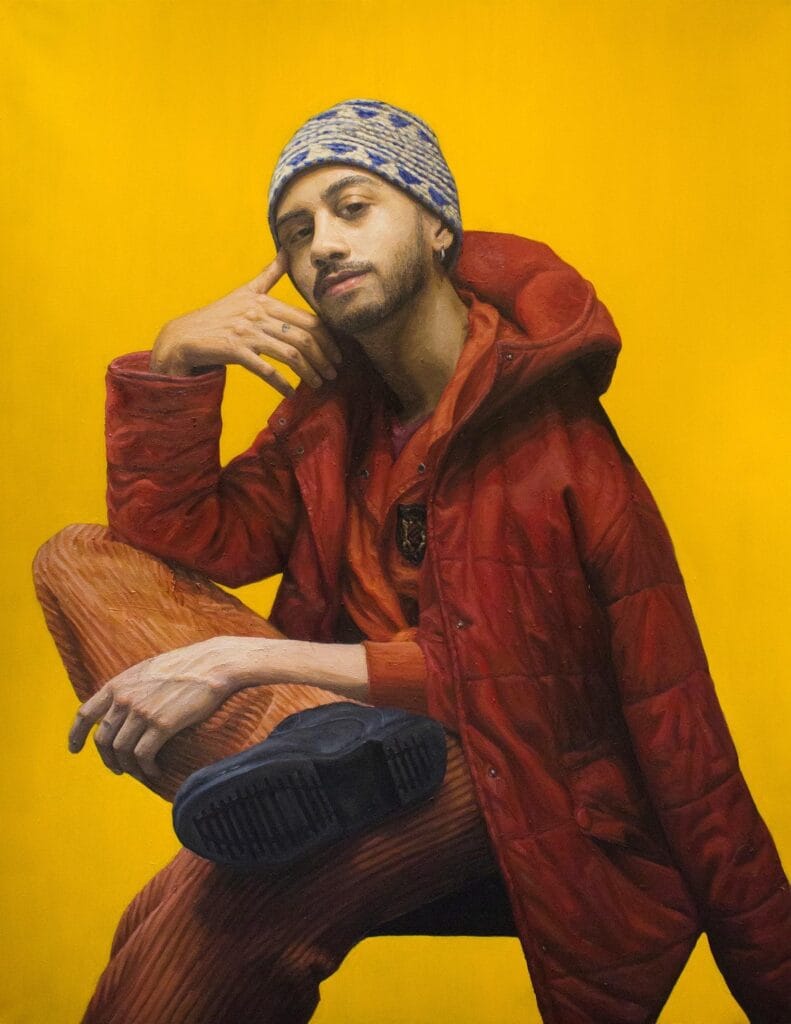
Given the richness of your themes and the deep personal connection between your work and your ideas, do you consider your art to be a form of activism that seeks to provoke viewer engagement?
I think all art, new and old, can be a form of activism. They all have their stories when they were created and a lot of them are still relevant today. Censorship is wanting to teach art history about Michelangelo’s David but not showing it because of nudity. Like it or not, all art is political. You’re painting flowers and landscapes in itself is a comment and can activate your audience. You want to draw right now because you don’t like what’s happening with AI or you don’t think it’s good direction for us? Congratulations that’s a form of activism. Welcome to the team. I’ve made pieces that are very much heavy-handed regarding activism, but all of it can be activism and it just takes you believing truly in something. Standing up for something can be scary and maybe the term activism is a lot for some because of the way we keep defining it. You speaking with your neighbors every day is building community and that’s activism as well. I don’t want to lose intimacy in my art especially in a world where the systems are seemingly designed to take that away from people. Don’t get caught up in terms and concrete definitions along with caveats. If you believe in something and you’re doing something in your life creatively or not about it, you’re an activist.
To learn and see more of Armando Cabba's work, visit his website and follow him on Instagram.
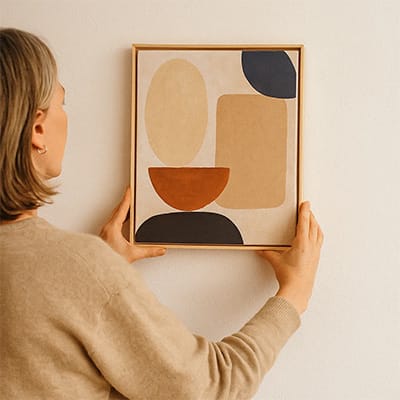
Need affordable floating frames for your artwork? Kolekin frames are the solution!
- Easily assembled at home
- Economical (but with the gallery look!)
- Free shipping on orders $50+

